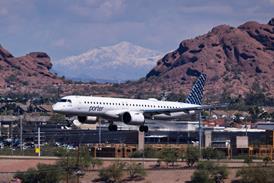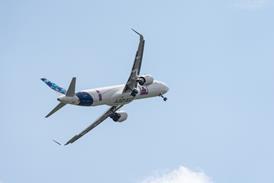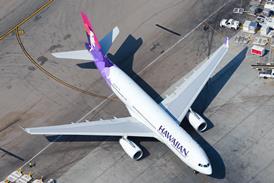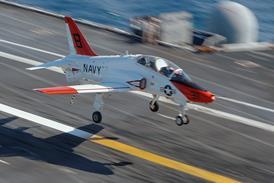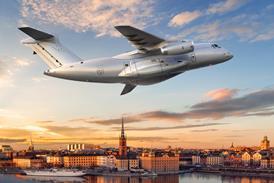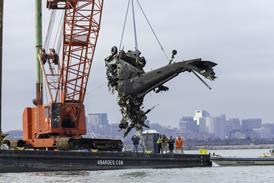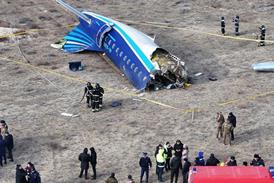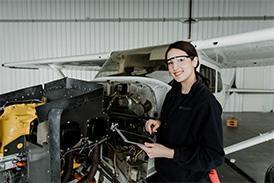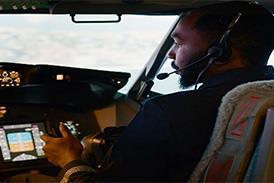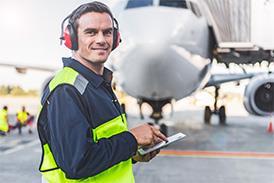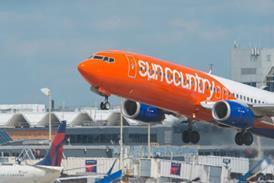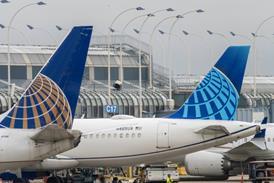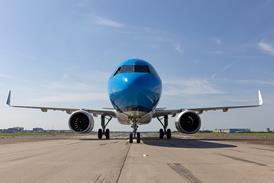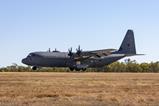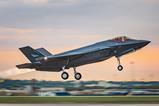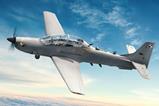Leonardo has outlined its ambition for the M-346 to evolve into a common training platform for Global Combat Air Programme (GCAP) partners Italy, Japan and the UK, as it advances work on a major Block 20 upgrade for the in-service type.
“We should not develop GCAP without thinking about the training platform, and why not start with the M-346,” says Tommaso Pani, Leonardo Aircraft’s senior vice-president, marketing and strategic campaigns.
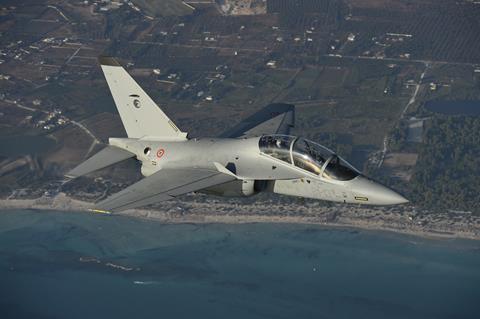
“It is something that I believe we should do together with our GCAP partners at an industry level, with BAE [Systems] and Mitsubishi Heavy Industries,” he suggests.
The GCAP member nations and industrial partners are currently working towards defining the design of a sixth-generation manned fighter, which is targeted for service entry from 2035.
“I am confident that the M-346 is the right basis to start the development of the GCAP trainer,” Pani says. “We are not talking about a new structure of the aircraft, but a new cockpit and avionics.”
With the Italian air force already operating the M-346, Pani notes that both Japan and the UK currently have student pilots flying the type at the International Flight Training School (IFTS) at Decimomannu air base in Sardinia.
And Leonardo already is promoting the twin-engined jet as a candidate in a Japan Air Self-Defence Force contest to replace its aged Kawasaki T-4 jet trainers.
“We have a system in service – not just an aircraft,” he emphasises, referring to accompanying ground-based training equipment including simulators.
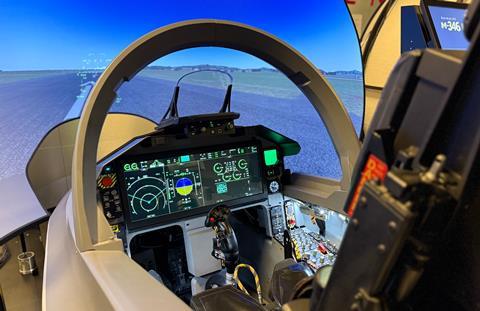
Meanwhile, Leonardo is advancing its Block 20 upgrade activity, and unveiled a prototype of its enhanced cockpit design at the Defence iQ Military Flight Training (MFT) conference near Cagliari in Sardinia on 31 March.
Launched at the Farnborough air show last July, the development programme will lead to the delivery from later this decade of the enhanced M-346 T Block 20 trainer and F-model light combat aircraft.
Pani says the new standard is being developed “to respond to the emerging requirements that we are getting from air forces”.
“The environment is changing rapidly,” he says. “It is clear that there is a requirement for flight skills, but also for information management skills. It is time now to find a balance.”
In the cockpit, the updated version will gain a Leonardo-developed large-area display (LAD) and low-profile head-up display for both crew members.
“The cockpit and large area display are working very well,” says Pani of the prototype, while adding: “we are still developing and fine-tuning our system.”
Other additions are to include an autothrottle, automatic ground collision avoidance system, and a datalink. The aircraft also will gain a performance-based navigation capability, to comply with operational requirements in civilian airspace. Leonardo is employing an open systems architecture design, so that it can further adapt the aircraft to meet future requirements.
“Most of the work we have to do is related to the HMI [human/machine interface],” says Leonardo project test pilot Quirino Bucci of the current project phase.
This includes advancing configuration options for the 20 x 8in LAD, which can depict up to four multi-function displays, along with additional information shown on configurable top and bottom bars. This flexibility will enable the platform to instruct pilots ahead of operating types ranging from the Boeing F-18, Eurofighter Typhoon and Lockheed Martin F-35 to a future GCAP fighter.
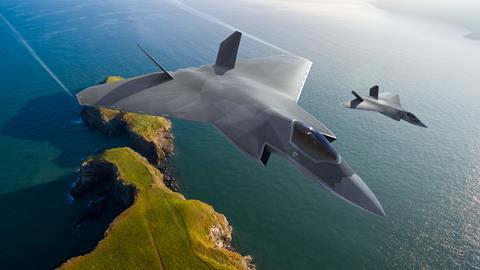
“We have a digital twin of the whole system, which will give us a significant benefit,” says Dario Marfe, Leonardo Aircraft’s executive vice-president, commercial and proprietary programmes.
The light-attack F-model, meanwhile, is to receive an active electronically scanned array (AESA) radar. Leonardo also plans to integrate medium-range air-to-air missiles, expanding its engagement range beyond the short-range Diehl Defence IRIS-T and Raytheon AIM-9M weapons already cleared for use with its current-generation M-346FA.
The M-346 F Block 20 will retain a maximum stores payload of 3,000kg (6,610lb), spread across seven hardpoints. It will also gain a self-protection system combining radar warning receivers, a missile warning system and chaff and flare dispensers.
A preliminary design review for the Block 20 programme was completed last year, with a critical design review to be conducted during the second half of this year.
“Austria will be our launch customer for the Block 20,” Pani says. Vienna last December announced its selection of the M-346 for a 12-aircraft light fighter requirement, with the type also to support pilot training.
“The discussions are ongoing within the government-to-government framework, and are very positive. We are very confident to be able to finalise an agreement in a short time,” he says.
Leonardo is meanwhile “in the final stages of selection” of an AESA sensor for its lead customer. “The priority for us is to respond on time, to market requirements,” Pani says. “Once we satisfy this requirement then we will prioritise the internal solutions,” he says, referring to the planned integration of a Leonardo-produced radar with the Block 20 version.
Current light-attack examples of the M-346 operated by Turkmenistan and on order for Nigeria are equipped with the Italian company’s Grifo-M mechanically-scanned fire-control radar.
In addition to its avionics enhancements, Giuseppe Pietroniro, Leonardo Aircraft’s head of simulation and training systems, notes that the Block 20 effort will further the capability of its ground-based training system via the use of data analytics, high-powered computing and artificial intelligence.
“We can do this because we have 15 years of experience with this integrated [training] system,” he says. Highlighting its existing use of advanced technology, he notes that the IFTS has employed virtual reality capabilities within its syllabus since 2015.
A first Block 20-standard aircraft – an adapted prototype – is due to fly for the first time in mid-2027, with customer deliveries to commence by the end of the following year. Elements of the upgraded system will also be available to existing customers as a retrofit option, Leonardo says.
Speaking to FlightGlobal at the MFT conference on 2 April – where Leonardo reported strong interest in its cockpit demonstrator among air force attendees – Pani said: “The Block 20 enhancement programme is the right one. We are not missing anything.”
Airframer eyes soaring demand for trainer and light-attack jets
With lifetime orders for the M-346 now standing at 146 aircraft, and with more than 100 of those jets already delivered, Leonardo is eyeing numerous other opportunities to add to its operator list within the coming decade.
Home customer Italy is the largest customer so far for the twin-engined type, having ordered 38 examples. Eighteen of those jets are already in service, with the remainder ordered late last year.
Five of its next batch will be assigned to the International Flight Training School at Decimomannu air base in Sardinia. The other 15 are to be manufactured in a special standard for use by the Italian air force’s Frecce Tricolori aerobatic display team. These jets will be the final examples to be produced in the M-346’s legacy production standard, with all future deliveries to be in its enhanced Block 20 guise.
Aviation analytics company Cirium details the current M-346 fleet as totaling 99 active examples, with other operators being Greece, Israel, Poland, Qatar, Singapore and Turkmenistan.
| Leonardo M-346 orders | ||
| Nation/organisation | Ordered | *In service |
| Greece | 10 | 8 |
| IFTS** | 4 | 4 |
| Israel | 30 | 30 |
| Italy | 38 | 18 |
| Nigeria | 24 | 0 |
| Poland | 16 | 15 |
| Qatar | 6 | 6 |
| Singapore | 12 | 12 |
| Turkmenistan | 6 | 6 |
| Total | 146 | 99 |
| Source: Leonardo, *Cirium fleets data | ||
| Note: **International Flight Training School | ||
The operational fleet has accumulated more than 130,000 flying hours, according to the Italian airframer.
Deliveries to the type’s newest customer are also poised to take-off, meanwhile. Nigeria’s lead M-346FAs from a 24-aircraft acquisition have already been completed, and Tommaso Pani, Leonardo Aircraft’s senior vice-president, marketing and strategic campaigns, indicates that shipments of the light combat aircraft will begin soon.
Government-to-government discussions around a 12-unit sale to Austria continue, while Leonardo is eyeing multiple other opportunities to add to its future list of operator nations.
“There are at least 15 to 20 customers that are looking for a new trainer or fighter that can perform as a trainer,” Pani says. “There are customers maybe thinking about a new trainer in [20]25, 26, 27 – others in 2030, 2035.
“We have a lot of opportunities – in the last few years they have increased,” he notes.
Prominent sales targets include Canada’s future fighter lead-in training requirement and the US Navy’s Undergraduate Jet Training System renewal effort to replace the Boeing T-45 Goshawk. Leonardo is teamed with Textron Aviation Defense in pursuit of the latter opportunity.
“The market for light fighter and training aircraft is huge, and it is increasing a lot rapidly in terms of requests,” says Pani, who also cites as examples future requirements in Australia, Finland, Japan and the UK.


